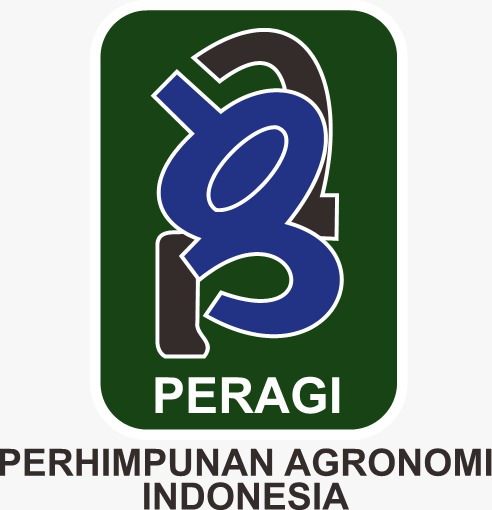Potential Of Kirinyuh Weed (Chromolaena odorata) As A Source Of Green Fertilizer in Two District in Kuantan Singingi Regency
Abstract
Kuantan Singingi Regency is dominated by marginal soil with the order of soil. The use of Ultisol for the cultivation of problematic plants with poor organic matter and nutrients needs to be overcome by giving organic matter. One of the potential sources of organic fertilizer in Kuantan singingi district is kirinyuh bush (Chromolaena odorata). This study has the objectives of 1) knowing the contribution of biomass and the distribution of kirinyuh. and 2) To determine the potential of kirinyuh as a source of organic fertilizer through the C, N, P and K nutrients it contains. This research is a field research that will be carried out using a survey method with purposive sampling. Kirinyuh's observation locations were in two sub-districts in Kuantan Singingi Regency, namely Kuantan Hulu Kuantan District and Mudik Kuantan Singingi Regency. The results of this study can be concluded that kirinyuh is widely available and easy to obtain in Kuantan singingi Regency and contains high nutrients so that it is very potential to be used as a source of organic fertilizer in the form of green manure. Kirinyuh weed in Kuantan singingi has not been utilized and is often found living in groups on the outskirts of land, roads, rice fields, shrubs and irrigation. Kirinyuh biomass as a source of organic matter varies, generally every 1m2 produces about 2-3 kg of biomass. The results of laboratory analysis, kirinyuh leaves contain nutrients of 42.95% C-organic, 4.41 %N, 1.032 %P and 3.05%K, while the stem contains 45.68% C-Organic.
Downloads
References
Afmerta, Ezward, C. and Mashadi, M. (2019) 'Test Application of Organic Iskandar Muda (Pim) Fertilizer on Growth and Production of Mustard Plants (Brassica juncea. L)', Journal of Tropical Crop Agronomy (Juatika), 1(1) , pp. 1–11. doi: 10.36378/juatika.v1i1.49.
Asridawati, S. and Febrianti (2019) 'The Role of Oil Palm Stem Charcoal in Increasing Nutrient Levels', Journal of Tropical Crop Agronomy, 1(2), pp. 67–72. doi: https://doi.org/10.36378/juatika.v1i2.159.
Distan. 2012.Annual report of the Department of Food Crops Kuantan Singingi district. Teluk Kuantan : Distan Kuansing., 2012.
Gusnidar et al. (2011) 'Application of Titonia and Straw Compost on Reduction of Artificial Fertilizer Input and Its Effect on Rice Production', Solum Journal, VIII(1), pp. 19–26. doi: https://doi.org/10.25077/js.8.1.19-26.2011.
Haryanta, D., Thohiron, M. and Gunawan, B. (2017) 'Study of Soil and Aquatic Sediments as', Journal of Research and Technology, 3(2). Available at: https://www.journal.unusida.ac.id/index.php/jrt/article/view/236.
Hasriyanti, H., Abbas, I. and Leo, MNZ (2016) 'Application of Soil Type Maps in Identifying Potential Land for Oil Palm Plantation in Cendana District, Enrekang Regency', Journal of Geography Education, 21(1), pp. 12–21. doi:10.17977/um017v21i12016p012.
Nugroho, B., Mildaryani, W. and Candra Dewi, DSH (2019) 'The Potential of Siamese Weed (Chromolaena odorata L.) as Compost Material for Organic Shallot Development', Indonesian Journal of Agronomy, 47(2 ), pp. 180–187. doi:10.24831/jai.v47i2.23440.
Ojeniyi, SO, Odedina, SA and Agbede, TM (2012) 'Soil productivity improving attributes of Mexican sunflower (Tithonia diversifolia) and siam weed (Chromolaena odorata)', Emirates Journal of Food and Agriculture, 24(3), pp. 243–247.
Sujana, IP and Pura, INLS (2015) 'Agrimeta: a journal of agriculture based on ecosystem balance', Agrimeta, 5(9), pp. 1–9. Available at: https://media.neliti.com/media/publications/89640-ID-pengelolaan-tanah-ultisol-dengan-pemberi.pdf.
Yuliana, S. and Lekitoo, K. (2018) 'Detection and Identification of Invasive Foreign Plant Species in the Manokwari Mountain Natural Tourism Park, West Papua', Journal of Faloak, 2(2), pp. 89–102. Available at: https://media.neliti.com/media/publications/343592-tipe-tipe-plant-asing-invasive-di-ta-cbe3a090.pdf.
Copyright (c) 2022 Deno Deno Okalia, Desta Andriani, Nopriadi Nopriadi, Gusti Marlina

This work is licensed under a Creative Commons Attribution 4.0 International License.
Authors who publish with Jurnal Agronomi Tanaman Tropika (JUATIKA) agree to the following terms:
Authors retain copyright and grant the Jurnal Agronomi Tanaman Tropika (JUATIKA) right of first publication with the work simultaneously licensed under a Creative Commons Attribution License (CC BY 4.0) that allows others to share (copy and redistribute the material in any medium or format) and adapt (remix, transform, and build upon the material for any purpose, even commercially) with an acknowledgment of the work's authorship and initial publication in Jurnal Agronomi Tanaman Tropika (JUATIKA).
Authors are able to enter into separate, additional contractual arrangements for the non-exclusive distribution of the journal's published version of the work (e.g., post it to an institutional repository or publish it in a book), with an acknowledgment of its initial publication in Jurnal Agronomi Tanaman Tropika (JUATIKA). Authors are permitted and encouraged to post their work online (e.g., in institutional repositories or on their website) prior to and during the submission process, as it can lead to productive exchanges, as well as earlier and greater citation of published work.







 More Information
More Information



